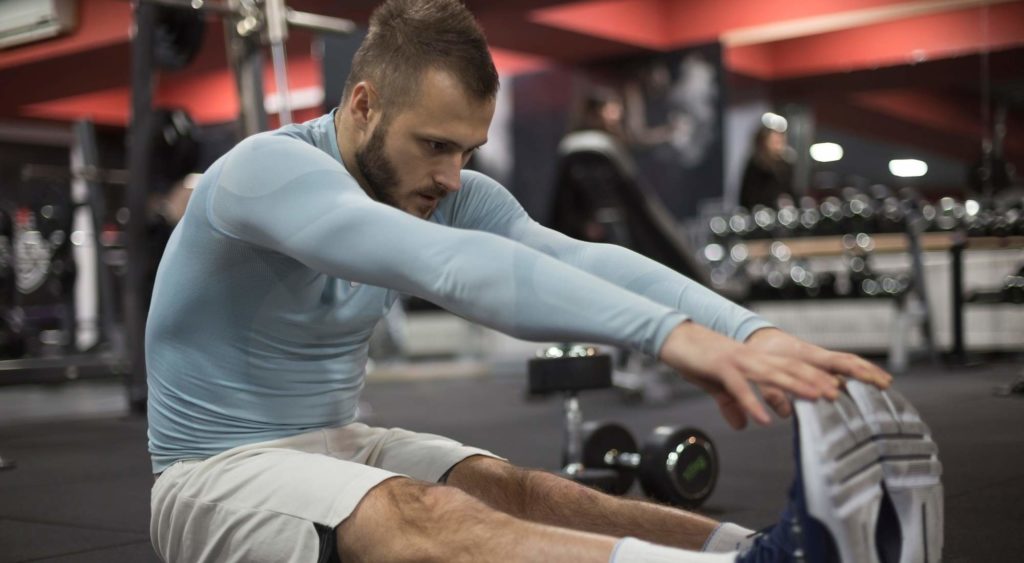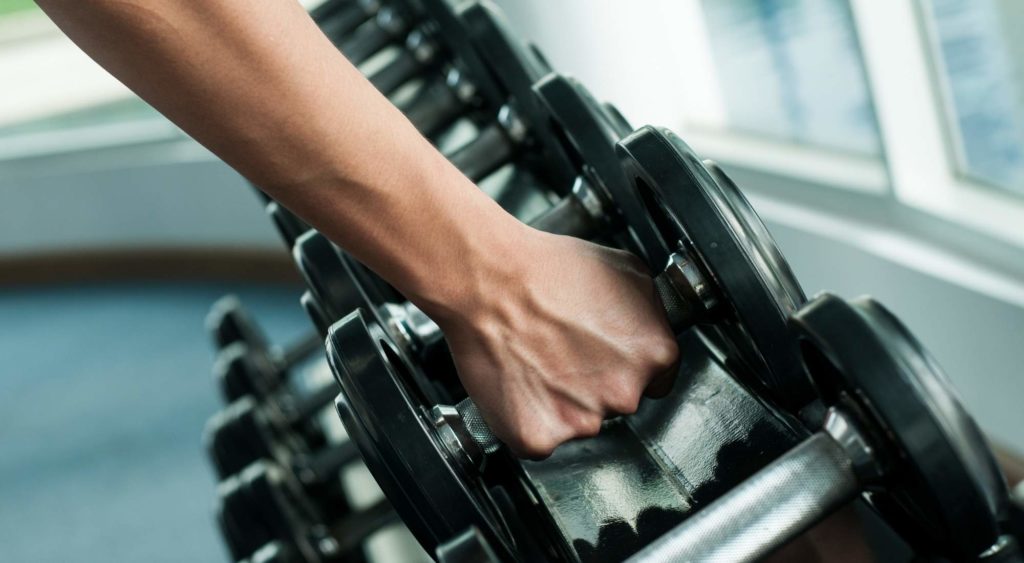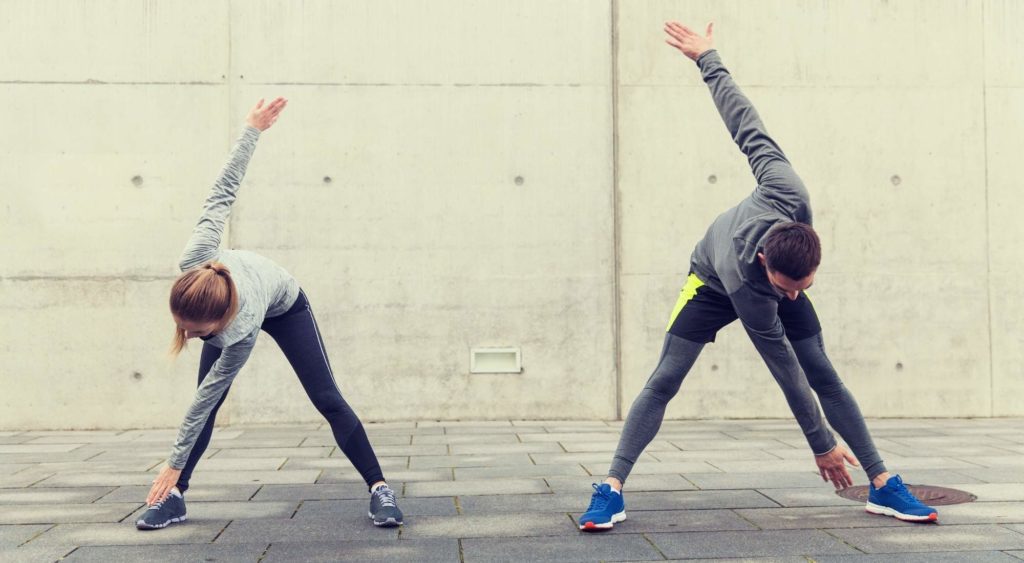
Perhaps your back is tired from computer work or trolling social media. Or maybe you want to improve your posture or recover from an injury.
No matter the reason, you need some relief.
How do you know what horizontal pull exercises are best for you? Do you need complicated equipment or can they be done at home?
Horizontal pull exercises are flexible enough to incorporate into any exercise routine.
In this guide, we’ll cover the basics of horizontal pull exercises and how they can help improve your body.
Table of Contents
- What Are the 5 Basic Movement Patterns?
- What Is Horizontal Pull and Push Exercises?
- 5 Examples of Horizontal Pull Exercises
- #1: Horizontal Pull Up
- #2: Horizontal Cable Row
- #3: Single Arm Cable Rows
- #4: TRX Rows
- #5: Chest-Supported Dumbbell Rows
- Is Deadlift a Horizontal Pull?
- What Are The Best Pull Exercises?
- Horizontal Pull Exercises: At Home
- Horizontal Pull Exercises: Bodyweight
- In Motion O.C. Can Help You Incorporate Horizontal Pull Exercises Into Your Workout Routine
What Are the 5 Basic Movement Patterns?
The five basic movement patterns (and some examples) are as follows:
- Knee Dominant: Lunges, squats, and step-ups
- Hinges: Deadlifts or good mornings
- Upper body push: Bench press and push-ups
- Upper body pull: Vertical or horizontal pulls such as rows or pull-ups
- Loaded carries: Farmer’s walks and suitcase carries
These movement patterns make up the foundation of many exercises.
While it’s important to talk to a personal trainer to practice proper form and prevent injury, this guide will specifically cover the basics of horizontal pulls and how you can use them in your exercise routine.
Keep reading to learn how to use horizontal pull exercises to reach your goals.
What Is Horizontal Pull and Push Exercises?
Horizontal push and pull exercises focus on pulling weight towards your torso or pushing the weight away from your torso.
Horizontal back exercises are especially beneficial to improve your:
- Upper back muscles
- Shoulder mobility; or
- Poor posture.
Horizontal pull exercises are versatile. And, as with any exercise, intention matters.
You can do the same exercise while focusing on different parts of your body and get different results. Altering form in an exercise can strengthen a completely different muscle.
What Are Some Pull Exercises?
A quick list of horizontal pull exercises include:
- Inverted Row
- Bench Row
- Bent-Over Row (Bilateral, Unilateral, Barbell, Dumbbell, Kettlebell, etc.)
- T-Bar Row
- Seated Row
- Kneeling Single-Arm Row
Let’s break a few of these down.
5 Examples of Horizontal Pull Exercises
Horizontal pull exercises involve pulling weight in towards your torso horizontally from straight in front of you.
Remember — there are many variations of horizontal pull exercises that we can’t fit in here.
This non-exhaustive list is a sampling of what you and your personal trainer can choose from to help decide what is best for your body and your goals.
#1: Horizontal Pull Up
Do you struggle with maintaining a good posture? Do you ever hunch over your cell phone or computer and often find yourself in pain?
Horizontal pull-ups, also known as inverted rows, are great for your back — But only if done correctly.
They help strengthen shoulder blade retraction or that movement that happens when you try to pull your shoulder blades together.
Equipment may include:
- Barbell
- Towel
- Low rings or suspension trainer
While performing a horizontal pull up, you’ll target muscles like your:
- Latissimus Dorsi (aka Lats, the broadest muscle in your back)
- Rhomboids (shaped like a rhombus, these muscles are found in your upper back)
- Lower and Mid-Trapezius (aka Traps, a major muscle in your upper back and neck)
- Biceps
- Core
- Forearm muscles
How to Perform A Horizontal Pull Up
To perform horizontal pull ups, you can vary the equipment you use.
Your body is going to be in a plank position under a barbell and you’re facing up. Your body should form a straight line from your head to your heels.
When you pull yourself up towards the barbell, your entire back is engaged.
Your legs are engaged to maintain the plank position.
Your elbows drive down towards your ribs as your shoulder blades squeeze together. Then slowly release the movement.
To increase the difficulty, elevate your feet on a stable surface as you do your pull-up.
Don’t have a barbell or suspension trainer? Keep reading to learn how horizontal pull-ups can be altered at home.

#2: Horizontal Cable Row
Horizontal cable rows are another exercise great for managing tension in your shoulders, upper back, and neck.
Equipment needed:
- Cable machine
Muscles targeted:
- Lats
- Rhomboids
- Traps
To properly do a horizontal cable row, it’s important to keep your core strong and stable. Your core is here to support you and keep you stable, not actively move you.
How to Perform A Horizontal Cable Row
To do this exercise properly, you’ll want to push your elbows down and back, almost making a curving motion with your elbows.
You want to avoid pulling the elbow straight back so the elbows come behind the rib cage. This can activate the wrong muscles.
The elbows should come even with or slightly behind the rib cage.
Push the elbows down first, then back towards the hips.
#3: Single Arm Cable Rows
Similar to horizontal cable rows, single-arm cable rows focus on the upper back muscles and activate the core.
Equipment needed:
- Cable machine
- Optional: Inclined bench for support
While performing single arm cable rows, you’ll target:
- Middle and lower traps
- Rhomboids
- Lats
- Erector Spinae (a set of muscles in your lower back)
This exercise can be done seated or standing.
How to Perform Single Arm Cable Rows
If you have an inclined bench, you can sit with one hand braced on the incline to focus your efforts as you pull with your other arm.
Keep about a fist-width of space between your torso and your bicep as you pull the cable.
Your shoulder will stay down and away from your ear.
Be sure to keep your torso upright and your torso facing straight ahead throughout the movement.
#4: TRX Rows
TRX stands for Total Body Resistance Exercise. This specialized form of suspension training was developed by former US Navy SEAL Randy Hetrick.
TRX rows are a form of horizontal pull-up that doesn’t require heavy equipment and allows you to adjust the angle of your body to increase, or decrease, the difficulty.
Equipment needed:
- A suspension band
Muscles targeted:
- Lats
- Rhomboids
- Traps
- Shoulders
- Biceps
- Core
How to Perform TRX Rows
To perform TRX Rows, you’ll need to grab on to the suspension bands then anchor your heels to the ground, not the whole foot.
To increase the difficulty you adjust your feet to move more parallel with the ground. The more horizontal you are to the ground, the more difficult the pull up will be. Pick an incline that allows you to do the movement correctly.
It’s better to strengthen, not strain.
You maintain the strong plank position and pull your chest forward by the elbows.
But wait…doesn’t that sound just like a basic horizontal pull up or inverted row? They’re similar but use different equipment.
TRX Rows only plant the heels on the ground whereas general horizontal pull-ups are more flexible.
Both exercises allow for carrying levels of difficulty. And they’re both great ways to strengthen your back, shoulders, and core.
#5: Chest-Supported Dumbbell Rows
Chest-supported dumbbell rows are a great way to improve your posture and boost your bench press.
Already have dumbbells lying around for bicep curls? Even better.
Many struggle to maintain a proper posture when doing a bent-over row. A chest supported dumbbell row reduces the likelihood of injury and allows you to do more reps.
If you have low back problems or prior surgeries and you are unable to do deadlifts, chest supported dumbbell rows are a great alternative.
Equipment needed:
- Dumbbells
- Inclined bench
- Optional: Barbell or weight plates
Muscles targeted:
- Lats
- Traps
- Rhomboids
- Biceps
How to Perform Chest-Supported Dumbbell Rows
Your dumbbells are kept in a neutral grip, and your chest is up.
As relaxing as it may seem, your face shouldn’t be pressed against the inclined bench. Keeping your chest raised activates your core and your back.
Be sure to move carefully, maintaining control, and resting for 1 to 2 seconds at the top of the pull.
If you’re having some trouble, you can practice protracting and retracting your shoulder blades. This is called a dumbbell shrug.
Is Deadlift a Horizontal Pull?
Deadlifts are often considered a lower-body pull exercise that is hip and hamstring dominant. Many pull exercises are used to increase deadlift performance.
Some common deadlifts include:
- Sumo deadlift
- Romanian deadlift
- Traditional deadlift

What Are The Best Pull Exercises?
The best horizontal pull exercises are ones that support your spine and protect your posture.
These exercises must incorporate four primary muscle groups:
- Erector Spinae
- Rhomboids
- Trapezius (Traps)
- Latissimus dorsi (Lats)
Horizontal Pull Exercises: At Home
Maybe you don’t have time to go to the gym, or you want to supplement what you’ve been working on with your personal trainer.
There are still many ways you can do horizontal pull back exercises at home.
Depending on the equipment you have at home there are many ways you can alter horizontal pull exercises to increase or decrease the difficulty.
Here are some options that require little-to-no equipment:
- Towel row or incline towel row: If you have a sturdy door, a pole, or a banister your towel can replace the suspension band or barbell needed for TRX rows or horizontal pull-ups.
- Bench/Chair row: If you have a sturdy bench at home, this is a great way to do a horizontal pull-up at home. You can pull yourself up to a table or bench or situate one chair on either side of you. Make sure they can hold your weight and won’t shift when you move.
- Don’t have kettlebells or dumbbells? Get creative! Take a look at the exercises you want to do, and see if any items around your home can be held securely while doing them. You can use your imagination and try these alternatives instead:
- Paint cans
- Large jars of canned tomatoes
- A soup pot
Horizontal Pull Exercises: Bodyweight
Horizontal pull-ups, or inverted rows, and TRX rows naturally rely on bodyweight.
You’re pulling up your own bodyweight upwards and engaging your entire body.
As you pull upwards, your body remains in a plank position which requires a strong core, firm legs muscles and an engaged back and shoulders to accomplish.
In Motion O.C. Can Help You Incorporate Horizontal Pull Exercises Into Your Workout Routine
At In Motion O.C., we show our clients how to work smarter, not harder. We want our clients to get the most out of every movement and every breath.
We’re passionate about taking care of our clients and helping them feel safe and supported.
Call us today for a free consultation. We look forward to helping you reach your goals.



